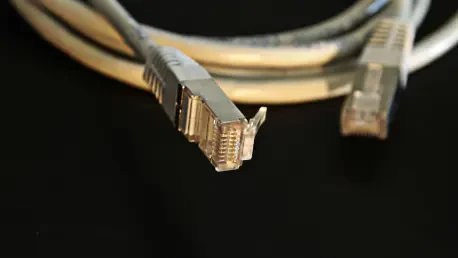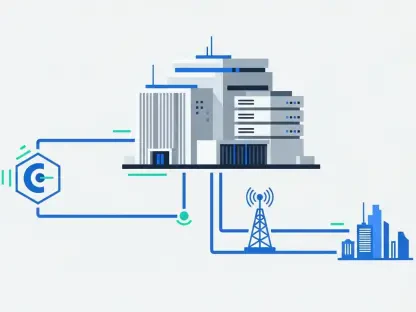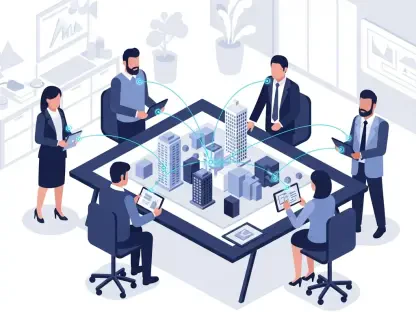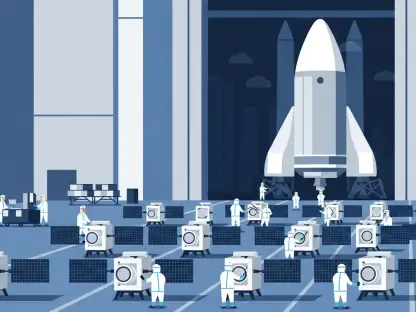braSetting the Stage for Next-Gen Connectivity
Imagine a world where buffering during an 8K streaming session or lag in a critical virtual meeting is a relic of the past, where households and businesses alike seamlessly juggle dozens of connected devices without a hitch. This isn’t a distant dream but a tangible reality being shaped by the latest advancements in cable broadband technology. DOCSIS 4.0, the newest standard in Data Over Cable Service Interface Specification, promises to revolutionize internet access with unprecedented speeds and reliability. As digital demands skyrocket with the rise of remote work, immersive gaming, and smart city initiatives, this technology emerges as a cornerstone for meeting modern connectivity needs. This review delves into the intricacies of DOCSIS 4.0, unpacking its features, performance capabilities, and transformative potential for the broadband landscape.
Unpacking the Core of DOCSIS 4.0 Technology
DOCSIS 4.0 stands as a monumental leap forward in cable internet standards, designed to push hybrid fiber/coax (HFC) networks to new heights. Capable of delivering downstream speeds up to 10 Gbps and upstream speeds reaching 6 Gbps, it addresses the escalating bandwidth demands of contemporary applications. This standard builds on its predecessors by optimizing spectrum usage and enhancing network reliability, ensuring that cable operators can compete robustly against fiber-optic and fixed wireless access alternatives.
A key aspect of this technology lies in its relevance to current market dynamics. With consumer expectations for high-speed internet at an all-time high, DOCSIS 4.0 positions cable providers to support data-intensive tasks like cloud computing and real-time IoT integrations. Its ability to maintain competitiveness in a rapidly evolving sector underscores its importance as a strategic tool for industry players aiming to retain and expand their customer base.
Key Features and Performance Metrics
Unmatched Multi-Gigabit Speed Potential
One of the standout attributes of DOCSIS 4.0 is its capacity to deliver multi-gigabit speeds, a game-changer for users engaged in high-bandwidth activities. Downstream capabilities of up to 10 Gbps enable flawless 4K and 8K video streaming, while upstream speeds of 6 Gbps cater to the growing need for robust upload performance in remote work and content creation. This leap over DOCSIS 3.1 is facilitated by extended spectrum usage up to 1.8 GHz and Full Duplex technology, allowing simultaneous high-speed data transmission in both directions.
Beyond raw numbers, the technology paves the way for near-symmetrical connections, a feature increasingly vital for balanced internet usage patterns. Such advancements mean that households and small businesses can handle simultaneous uploads and downloads without compromise, marking a significant shift in user experience. The implications for applications requiring real-time interaction, like online gaming and virtual reality, are profound, setting a new benchmark for connectivity standards.
Boosted Efficiency and Network Stability
Efficiency takes center stage with DOCSIS 4.0 through innovations like advanced 4096-QAM modulation, which maximizes data transmission within existing bandwidth. This improvement reduces network congestion, ensuring smooth performance even during peak usage hours. Additionally, low-latency features enhance responsiveness, a critical factor for time-sensitive applications such as video conferencing and autonomous system integration.
Another compelling advantage is the technology’s ability to leverage existing HFC infrastructure with minimal overhauls, thanks to superior spectrum efficiency. Cable operators can thus scale services without incurring prohibitive costs, a practical benefit in a cost-sensitive industry. Early deployment tests have shown promising results, with reduced packet loss and heightened stability, affirming the standard’s readiness for widespread adoption in dynamic usage scenarios.
Industry Rollout and Adoption Patterns
The rollout of DOCSIS 4.0 is gaining momentum as major cable operators commit to upgrading their networks. Companies like Charter Communications are spearheading efforts with ambitious plans to integrate this technology across significant portions of their service areas, targeting accelerated timelines starting this year. Such initiatives reflect a broader industry trend toward embracing next-generation standards to meet consumer demand for faster, more reliable internet.
Partnerships with technology providers are also shaping deployment strategies. For instance, collaborations like Cox Communications’ work with Vecima Systems for virtual cable modem termination systems highlight the collaborative push toward implementation. These alliances aim to streamline the transition, ensuring that infrastructure upgrades align with operational goals and customer expectations over the coming years.
However, the adoption process is not without its complexities. The multi-phased approach to upgrades, often spanning several years, involves substantial investments, with costs estimated at around $100 per home passed for some operators. Balancing these financial commitments with the promise of enhanced service delivery remains a critical focus for stakeholders navigating this transformative period.
Real-World Impact and User Benefits
DOCSIS 4.0 is poised to redefine connectivity across diverse sectors, from residential broadband to enterprise solutions. High-demand households benefit immensely from multi-gigabit speeds, enabling seamless integration of smart home devices, high-definition streaming, and cloud-based services without performance bottlenecks. This technology ensures that multiple users can engage in data-heavy tasks simultaneously, a necessity in today’s digital-first environment.
Small businesses and smart city projects also stand to gain from the robust infrastructure DOCSIS 4.0 supports. Enhanced upload speeds facilitate real-time data sharing for business operations, while low latency underpins applications like urban traffic management systems and public safety networks. These capabilities illustrate the standard’s role in fostering innovation across varied use cases, driving efficiency and connectivity on a broader scale.
Specific commitments, such as plans to extend DOCSIS 4.0 capabilities into underserved regions through strategic mergers, highlight its potential to bridge digital divides. By upgrading legacy networks in targeted areas, operators can deliver cutting-edge services to communities previously limited by outdated infrastructure, thus amplifying the societal impact of this technological advancement.
Challenges in Implementation and Market Dynamics
Despite its promise, the rollout of DOCSIS 4.0 faces notable technical hurdles. Significant network upgrades are required to fully harness its capabilities, often necessitating compatibility updates for older customer premises equipment. This transition can pose logistical challenges for operators striving to maintain service continuity while modernizing their systems.
Market and regulatory obstacles further complicate the landscape. High deployment costs may lead to revised pricing models for next-gen services, potentially encountering consumer resistance. Additionally, navigating regulatory frameworks to secure approvals for infrastructure investments demands strategic planning and stakeholder engagement to mitigate delays and ensure compliance.
Efforts to address these issues are underway, with operators exploring cost-effective solutions like in-house equipment platforms to reduce expenses. Strategic investments in infrastructure modernization also aim to offset initial financial burdens, ensuring that the benefits of DOCSIS 4.0 can be realized without undue strain on operational budgets or customer affordability.
Looking Ahead: The Future of Cable Broadband
The trajectory of DOCSIS 4.0 suggests a pivotal role as a bridge to future connectivity standards, potentially paving the way for full fiber transitions in the long term. Its adaptability positions it as a critical stepping stone, capable of integrating with emerging technologies like 5G offloading to enhance network versatility and coverage across diverse environments.
Potential breakthroughs, such as broader implementation of Full Duplex capabilities, could further elevate its performance, addressing evolving consumer needs. As cable operators refine their deployment strategies, the technology’s integration with next-gen innovations will likely shape its impact on industry standards, reinforcing cable’s competitive edge against fiber and satellite alternatives.
The lasting influence on broadband access is undeniable, as DOCSIS 4.0 redefines expectations for speed and reliability. Its ability to sustain cable’s relevance in a crowded connectivity market hinges on continued investment and adaptation, ensuring that it meets the escalating digital demands of future generations while maintaining a strong market position.
Reflecting on the Journey and Next Steps
Looking back, the exploration of DOCSIS 4.0 revealed a technology that has already begun to transform the broadband sector with groundbreaking speed and efficiency gains. Its strategic importance for cable operators was evident in early adoptions by industry giants, signaling a robust foundation for widespread impact. The review highlighted how its technical advancements have set a new standard for connectivity, meeting the digital era’s relentless demands.
Moving forward, stakeholders must prioritize strategic investments to overcome deployment challenges, focusing on cost-effective solutions to ease the transition for consumers. Collaborative efforts between operators and technology providers should aim to accelerate rollouts, particularly in underserved areas, ensuring equitable access to next-gen services. Additionally, ongoing dialogue with regulatory bodies will be crucial to navigate market hurdles, securing a sustainable path for innovation and growth in the cable broadband landscape.









